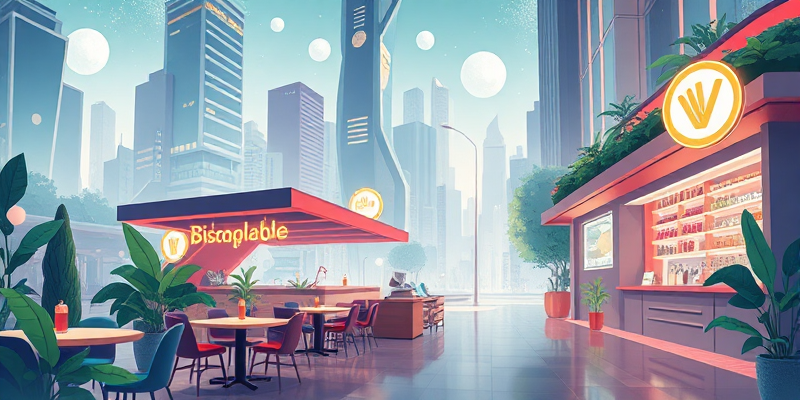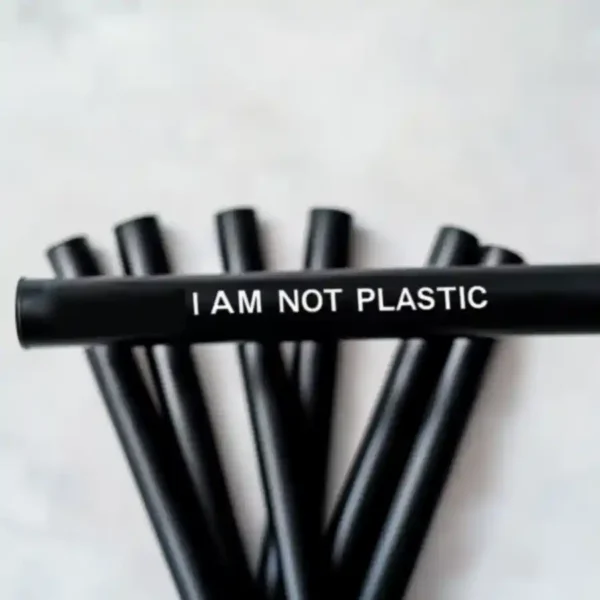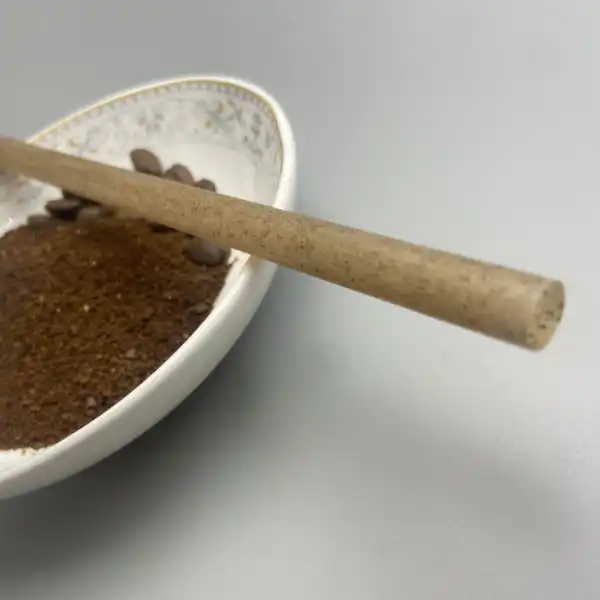Biodegradable Straws for Restaurants: B2B Guide to Sustainable Compliance

Introduction: Meeting the Demands of a Changing Industry

Picture this: It’s a busy Friday evening at your restaurant. The dining room is packed with guests enjoying their meals, many of them sipping drinks through straws. Now imagine that instead of contributing to the 500 million plastic straws Americans use daily, your establishment is part of the solution, offering sustainable alternatives that align with both environmental values and regulatory requirements.
The food service industry stands at a critical juncture. With plastic straw bans sweeping acros cities, counties, and entire countries, restaurant owners and procurement managers find themselves navigating a complex landscape of regulations, customer expectations, and operational considerations. From California’s statewide restrictions to the European Union’s Single-Use Plastics Directive, the message is clear: the era of conventional plastic straws is coming to an end.
This shift presents both challenges and opportunities for restaurant businesses. While complying with new regulations requires changes to established practices, it also offers a chance to showcase your commitment to sustainability—a value increasingly important to consumers. According to a recent National Restaurant Association survey, 72% of diners say they care about how restaurants handle food waste and packaging sustainability, making your straw choice not just an operational decision but a marketing one as well.
Biodegradable straws represent a practical solution to this modern busines challenge. Unlike their plastic counterparts that persist in the environment for centuries, biodegradable options—particularly those made from natural materials like sugarcane bagasse—break down naturally after use, dramatically reducing environmental impact while maintaining the convenience your customers expect.
But not all biodegradable straws are created equal. Quality, durability, food safety, and genuine sustainability credentials vary widely among products and suppliers. For restaurant owners and procurement specialists, understanding these differences is essential to making informed decisions that satisfy regulatory requirements, customer expectations, and busines needs.
In this comprehensive guide, we’ll explore everything restaurant professionals need to know about implementing biodegradable straws in their operations, with a focus on practical considerations, compliance requirements, and the tangible busines benefits of making the switch.
Regulatory Compliance: Certifications That Matter for Your Busines

Navigating the regulatory landscape for food service items can be daunting, especially as sustainability regulations continue to evolve. For biodegradable straws, understanding certification requirements isn’t just about avoiding penalties—it’s about ensuring you’re truly delivering on your sustainability promises.
The financial implications of non-compliance can be significant. In California alone, businesses can face fines of up to $300 per day for violations of plastic straw regulations, potentially amounting to over $100,000 annually for repeat offenders. Beyond direct financial penalties, the reputational damage from environmental non-compliance can have lasting effects on your busines.
When evaluating biodegradable straws for your restaurant, several certifications should be on your radar:
1. **FDA Compliance**: Any product that comes into contact with food and beverages must meet FDA food contact safety standards. This certification ensures the straws contain no harmful chemicals that could leach into drinks.
2. **LFGB Certification**: This German food safety standard is often considered more stringent than FDA requirements and provides additional assurance of product safety.
3. **Home Compostability**: This certification confirms that straws will break down in home composting conditions, not just in industrial facilities that many areas lack.
4. **BPI Certification**: The Biodegradable Products Institute certification verifies that products meet scientific standards for compostability.
NatureBioEco’s biodegradable straws meet all these essential certifications, simplifying compliance for restaurant owners. Our products are designed with regulatory requirements in mind, providing peace of mind that your sustainable choice also keeps you on the right side of increasingly strict environmental regulations.
Learn how NatureBioEco’s certified biodegradable straws can help your hotel busines stay compliant while enhancing your sustainability profile.
How Biodegradable Straws Compare to Other Eco Alternatives

With multiple sustainable straw options on the market, how do you determine which is right for your restaurant? Let’s compare the main contenders:
| Straw Type | 耐久性 | Customer Experience | Cost | Decomposition Time | 環境への影響 |
|---|---|---|---|---|---|
| ———— | ———— | ——————— | —— | ——————- | ——————— |
| Sugarcane (Bagasse) | 2-3 hours in cold drinks, 1+ hour in hot | Natural feel, neutral taste | $$$$ | 30-180 days | Minimal – made from agricultural waste |
| Paper | 1-2 hours in cold, minutes in hot | Can become soggy, sometimes affects taste | $$ | 30-60 days | Low – but requires virgin materials and chemical processing |
| PLA (Corn-based) | Similar to plastic | Most plastic-like experience | $$$ | 90-180 days (industrial compost only) | Moderate – uses food crops, requires industrial composting |
| Metal | Indefinite | Premium feel, conducts temperature | $$$$ (reusable) | N/A – reusable | Low long-term, but high production footprint |
| Bamboo | 3+ hours | Natural, rustic aesthetic | $$$$$ | 4-6 months | Low – renewable resource |
According to UNEP research on plastic alternatives, material substitution alone isn’t enough—the full lifecycle impact matters. Sugarcane-based straws outperform many alternatives because they’re made from agricultural waste (bagasse) that would otherwise be burned, creating a truly circular product.
The practical implications for restaurants are significant. While paper straws might be cheaper initially, customer complaints about soggines and the need for multiple straws per guest can erase those savings. Metal straws require rigorous cleaning protocols and represent a substantial upfront investment. PLA straws look like conventional plastic but require industrial composting facilities that many regions lack—meaning they often end up in landfills despite their “compostable” label.
Sugarcane straws offer a balanced solution that maintains the guest experience while delivering genuine environmental benefits. They stay intact throughout a typical dining experience, don’t affect beverage taste, and truly biodegrade in standard composting conditions.
Discover the detailed comparison between paper and sugarcane straws for your busines to make the most informed decision for your establishment.
Top Busines Benefits of Switching to Biodegradable Straws

Beyond regulatory compliance, biodegradable straws offer compelling busines advantages that can positively impact your bottom line and brand perception:
### Enhanced Brand Image
In today’s market, sustainability isn’t just a preference—it’s an expectation. A striking 67% of consumers consider a brand’s environmental practices before making purchase decisions, according to a recent Nielsen global survey. By visibly implementing sustainable practices like biodegradable straws, restaurants signal their values to customers who increasingly vote with their wallets for environmental responsibility.
### Customer Loyalty and Acquisition
Sustainability initiatives create emotional connections with customers. When guests see your commitment to environmental stewardship through choices like biodegradable straws, it builds trust and loyalty. Many restaurants report that after switching to sustainable alternatives, they see increased positive mentions in reviews and social media—free advertising that helps attract new environmentally conscious customers.
### Cost-Effective Compliance
While biodegradable straws typically cost more than conventional plastic versions, they often prove more economical than the alternatives when considering the full picture:
- Avoided regulatory fines and penalties
- Reduced waste management costs (especially in areas with composting programs)
- Potential tax incentives for sustainable busines practices
- Marketing value that would otherwise require paid advertising
### Operational Streamlining
Many restaurants find that switching to biodegradable straws creates an opportunity to optimize their straw usage overall. By implementing “straws upon request” policies alongside the switch to sustainable materials, businesses typically see a 30-40% reduction in total straw consumption, further offsetting the higher unit cost of biodegradable alternatives.
### Future-Proofing Your Busines
As environmental regulations continue to tighten globally, businesses that proactively adopt sustainable practices position themselves advantageously. Rather than scrambling to comply with each new mandate, forward-thinking establishments build sustainability into their operations now, creating resilience against regulatory changes.
Find strategic approaches to marketing your eco-friendly straws to maximize the busines benefits of your sustainability investment.
Environmental Impact: Why Biodegradable Straws Win

The environmental case for biodegradable straws goes beyond simply avoiding plastic pollution. When evaluating the true ecological footprint of your straw choice, several factors come into play:
### Climate Impact
Traditional plastic straws produce approximately 1.46 kilograms of CO2 equivalent per thousand units throughout their lifecycle. In contrast, sugarcane-based biodegradable straws actually create a carbon-negative footprint when accounting for the carbon sequestered during growth and the emissions avoided by repurposing agricultural waste. For a medium-sized restaurant serving 500 drinks with straws daily, switching to sugarcane straws can prevent the equivalent of over 266 kilograms of CO2 emissions annually—comparable to planting 12 trees each year.
### Ecosystem Protection
Unlike conventional plastics that fragment into microplastics, properly disposed biodegradable straws from NatureBioEco completely return to nature without leaving persistent pollutants. This distinction is critical for marine ecosystems, where plastic straws rank among the top ten items found during beach cleanups and pose significant threats to wildlife through ingestion and entanglement.
### Resource Conservation
Biodegradable straws made from agricultural byproducts represent circular economy principles in action. Rather than requiring virgin materials or petroleum, sugarcane straws utilize existing waste material, turning a disposal problem into a valuable product. This approach conserves resources while providing additional income streams for agricultural communities.
### Waste Reduction
While any single-use item creates waste, biodegradable straws integrate seamlessly into existing organic waste streams. When composted—even in home composting systems—these straws break down within 30-180 days, depending on conditions, compared to the 200+ years required for conventional plastic straws to degrade.
Learn more about sustainable alternatives and their environmental impacts in our comprehensive guide to making environmentally responsible choices for your busines.
Case Study: Biodegradable Straws Succes in Action

### Ocean View Resort Chain: Transforming Customer Experience Through Sustainability
Ocean View Resorts, a mid-sized hospitality group with 12 properties acros coastal regions, faced increasing pressure from both regulations and guests to eliminate single-use plastics from their operations. Their initial attempt with paper straws resulted in numerous customer complaints about degradation during use, particularly in their signature tropical cocktails that typically take 20-30 minutes to consume.
After researching alternatives, the group’s procurement team partnered with NatureBioEco to implement sugarcane-based biodegradable straws acros all properties. The results were immediately measurable:
- **Customer Satisfaction**: Guest complaints about straw quality decreased by 94% within the first month
- **Operational Efficiency**: Bar staff reported 22% les time spent replacing failed straws during service
- **Cost Management**: Despite a higher unit cost than paper alternatives, overall straw expenses decreased by 17% due to reduced replacement needs and implementation of a “by request only” policy
- **Brand Enhancement**: Social media mentions of the resort’s sustainability efforts increased by 156%, with many guests specifically highlighting the quality of the biodegradable straws
- **Environmental Impact**: The chain eliminated approximately 2.3 million plastic straws annually, preventing an estimated 7.8 tons of plastic waste
“The switch to sugarcane straws from NatureBioEco represented a turning point in our sustainability journey,” explains Maria Chen, Director of Operations. “Unlike our previous attempts with eco alternatives, these straws actually enhanced the guest experience while delivering on our environmental commitments. The minimal taste impact and remarkable durability in both hot and cold beverages make them ideal for our diverse food and beverage offerings.”
The resort chain has since expanded their partnership with NatureBioEco to include other biodegradable service items, creating a comprehensive sustainable dining experience that resonates with their target demographic of environmentally conscious travelers.
Discover how event planners are implementing biodegradable straws for large-scale functions with similar succes.
よくある質問
- Are biodegradable straws more expensive than conventional plastic straws?
- Yes, biodegradable straws typically cost 2-3 times more than conventional plastic straws on a per-unit basis. However, the total cost equation changes when you factor in regulatory compliance, waste management savings, and the marketing value of sustainable practices. Many businesses also find they reduce overall straw usage by 30-40% after switching to biodegradable options and implementing “by request” policies.
- How should we store biodegradable straws to maintain quality?
- Proper storage is crucial for maintaining biodegradable straw quality. Store them in a cool, dry place away from direct sunlight and moisture. Unlike plastic straws, natural material straws can be affected by humidity, so sealed containers are recommended. Most biodegradable straws have a shelf life of 1-2 years when properly stored.
- Will biodegradable straws hold up in frozen drinks and smoothies?
- NatureBioEco’s sugarcane straws maintain structural integrity for 2-3 hours in cold beverages, including frozen drinks. This significantly outperforms paper alternatives, which typically begin degrading within 30-60 minutes. For extremely thick smoothies, we recommend our wider diameter options that provide better functionality while maintaining biodegradability.
- Can customers tell the difference between plastic and biodegradable straws?
- Quality biodegradable straws like those from NatureBioEco provide a very similar user experience to plastic straws. The main differences customers might notice are a slightly more natural appearance and a neutral taste that doesn’t affect beverages. Customer feedback consistently indicates that sugarcane straws are preferred over paper alternatives for their durability and minimal impact on the drinking experience.
- Are biodegradable straws truly better for the environment?
- When properly sourced and disposed of, yes. The environmental advantage comes from both the renewable source materials and the dramatically shorter degradation time. While no single-use item is impact-free, biodegradable straws made from agricultural byproducts like sugarcane bagasse represent a significant improvement over petroleum-based plastics that persist in the environment for centuries.
- What quantities do biodegradable straws come in for busines orders?
- NatureBioEco offers flexible B2B ordering options starting from case quantities (typically 10,000 units) up to container-load volumes for large operations. We also provide customization options including branded printing and custom packaging for businesses looking to enhance their sustainability messaging through their straw program.
- How do we properly dispose of biodegradable straws in our restaurant?
- The ideal disposal method is commercial composting, though our sugarcane straws will also biodegrade in home composting systems. If composting isn’t available in your area, conventional waste disposal is still preferable to plastic straws, as biodegradable straws will break down much faster in landfill conditions. We recommend educating staff on proper disposal protocols to maximize environmental benefits.







